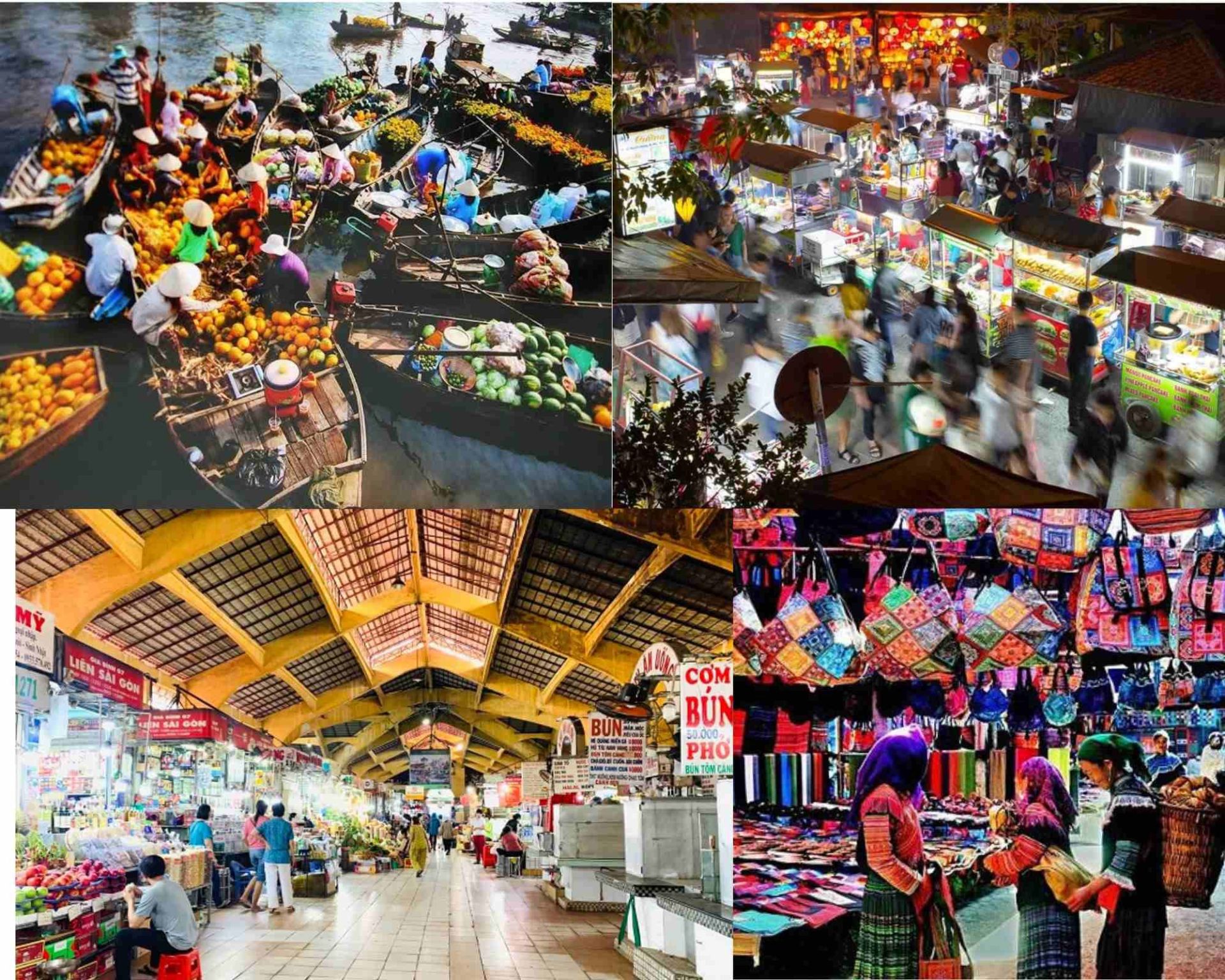The Role of Traditional Markets in Vietnam’s Modern Economy
In an age of rapid e-commerce growth, digital payments, and supermarket chains, it’s easy to assume that traditional markets in Vietnam would be in decline. However, these vibrant and bustling local markets continue to play a significant role in the country’s modern economy. Whether in the alleyways of Hanoi’s Old Quarter or the floating markets of the Mekong Delta, traditional markets remain deeply woven into Vietnam’s cultural and economic fabric.
This blog explores the enduring role of traditional markets in Vietnam, their contribution to local livelihoods, how they coexist with modern retail formats, and why they matter more than ever in today’s shifting economic landscape.
1. A Pillar of Local Commerce and Employment
Traditional markets, known locally as chợ, are not only shopping destinations—they are microeconomic ecosystems. From early morning until dusk, these markets serve as a lifeline for thousands of small vendors and farmers who rely on daily sales for income.
According to Vietnam’s General Statistics Office, there are over 8,500 traditional markets across the country, employing millions either directly or indirectly. These markets are typically unregulated or semi-regulated spaces, allowing for affordable entry into the commerce sector, especially for:
-
Smallholder farmers.
-
Low-income families.
-
Rural women and elderly workers.
This inclusivity makes traditional markets an important tool for poverty alleviation and grassroots economic activity.
2. Affordable Access to Fresh Produce and Essentials
One of the main reasons traditional markets remain popular is the accessibility of fresh and affordable food. Shoppers value:
-
Daily deliveries of vegetables, seafood, and meat.
-
Seasonal, locally grown produce.
-
Negotiable pricing and small-volume sales.
In contrast, modern supermarkets often feature imported goods, bulk packaging, and fixed prices, which may not appeal to working-class and rural communities.
🔗 Learn more: Vietnam Briefing – Food Retail Landscape in Vietnam
3. Cultural and Social Significance
Vietnamese markets are much more than economic entities—they are cultural landmarks. Markets are:
-
Gathering places for local communities.
-
Spaces for daily conversations, gossip, and social interaction.
-
Venues for preserving culinary and artisanal traditions.
From Chợ Đồng Xuân in Hanoi to Bến Thành Market in Ho Chi Minh City, each market carries a unique identity that reflects regional customs, dialects, and products.
In fact, Vietnam’s Ministry of Culture, Sports and Tourism has taken steps to preserve certain traditional markets as cultural heritage sites, recognizing their role in promoting national identity and tourism.
🔗 Read more: Vietnam Tourism – Traditional Markets to Explore
4. Complementing, Not Competing with, Modern Retail
While Vietnam’s retail market has seen a boom in convenience stores and shopping malls, traditional markets continue to fill gaps that formal retail struggles with:
-
Rural reach: Many traditional markets serve areas where supermarket chains haven’t expanded.
-
Product diversity: Items like herbal medicines, live animals, handmade tools, and street food are rarely sold in formal retail.
-
Price sensitivity: Consumers who shop daily prefer smaller quantities and flexible pricing.
The rise of omnichannel strategies among retailers has also led to some supermarkets integrating traditional vendors into their supply chains—blurring the lines between the formal and informal economy.
🔗 Explore Vietnam’s retail transformation: ASEAN Briefing – Retail in Vietnam
5. Digitalization and Modern Upgrades
In recent years, Vietnam’s government and tech startups have introduced programs to digitize traditional markets. These initiatives include:
-
Cashless payment systems using QR codes and mobile banking.
-
Online ordering platforms that connect market vendors with consumers.
-
Basic training for market vendors on digital literacy.
For example, in Ho Chi Minh City, over 60% of traditional markets now accept cashless payments, according to the Vietnam E-commerce Association (VECOM). This modern layer of convenience helps traditional markets stay relevant among younger, tech-savvy consumers.
6. Resilience During Economic Shocks
The COVID-19 pandemic underscored the resilience of traditional markets. While large retail chains suffered supply chain disruptions, many local markets quickly adapted:
-
Vendors shifted to home delivery via Zalo or Facebook.
-
Community-based logistics helped maintain food supply continuity.
-
Informal economies filled gaps when formal systems stalled.
These grassroots responses highlighted the agility and importance of informal networks in crisis response and food security.
7. Challenges to Long-Term Sustainability
Despite their strengths, traditional markets face significant challenges:
-
Lack of infrastructure (poor sanitation, limited space).
-
Exposure to weather and pollution.
-
Rising land prices and urban redevelopment pushing markets out of city centers.
-
Informality, making taxation and regulation difficult.
To address these, local governments have initiated market redevelopment projects focusing on cleaner, safer, and better-managed environments, often with mixed results.
🔗 Government efforts: Hanoi News – Market Upgrades Underway
8. Future Outlook: Coexistence, Not Replacement
Rather than being replaced by supermarkets and online retail, traditional markets in Vietnam are adapting and evolving. Their strength lies in:
-
Local trust and loyalty.
-
Low operational costs.
-
Hyper-local understanding of consumer needs.
As Vietnam marches toward its 2030 vision of a digital and inclusive economy, traditional markets can be empowered through better infrastructure, access to technology, and inclusion in formal supply chains—ensuring their continued relevance in a changing landscape.
Conclusion
Traditional markets in Vietnam are far more than relics of the past—they are active, dynamic components of the country’s evolving economy. For local communities, they provide livelihood, identity, and daily sustenance. For Vietnam’s economy, they offer resilience, flexibility, and cultural continuity.
As businesses and governments plan for the future, the goal should not be to replace traditional markets, but to uplift them into the broader vision of a sustainable, inclusive, and modern economy.
Want to explore how traditional markets impact sourcing and distribution strategies in Vietnam?
👉 Visit Vietnam-Agent.com to connect with experienced local agents who understand Vietnam’s diverse market ecosystem—both modern and traditional.
